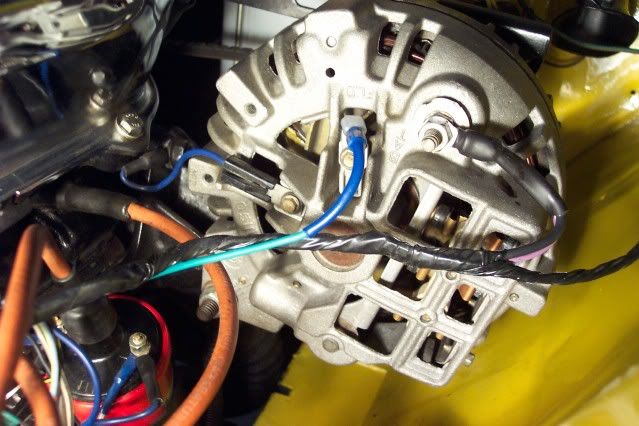wjar, maybe this will help?
The two (70/ later, electronic) regulator terminals connect to the two field connections on the new (70/later) alternator. Does not matter which goes to what.
The "top of the triangle" of the regulator connector is BLUE and also goes to switched ignition, which is the same place the old regulator hooked to "ign."
One thing you MUST do is check for ground and harness voltage drop which (if there is excessive drop) WILL cause overcharging.
To check both the hot and ground side of the circuit, do this:
Turn the key to run, engine off. Put one probe on the battery positive, and the other probe on the blue wire at the field of the alternator.
You will be checking voltage drop for the complete circuit path from the battery--fuse link--through the bulkhead--through the ammeter circuit--through the ignition switch and it's connector and back out--back out the bulkhead connector --to the regulator, the ignition, and the field terminal
You are hoping for a VERY low reading, and zero would be perfect. Anything over .2V (two TENTHS of a volt) is a concern, and over 1/2 volt is way too much If you read above .2, check that circuit path, especially the bulkhead connector and the ignition switch connector
Next, check the ground path. Start the car, get the engine running to simulate "low to medium cruise" and check the battery voltage with your voltmeter to make sure it's below betwen 13 and 16. I chose 16 because of your charging issue, and we "aren't there yet." A properly operating system would be more like 13.5-14.5
Now, put one probe right on the negative battery post. Stab the other probe onto the regulator case. Make sure you stab through any paint, rust, chrome.
Once again, you are looking for a very low reading, and above .2V shows the ground between the battery and regulator needs improvement.






















